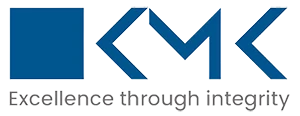Mastering Chart of Accounts Management: The Backbone of Financial Clarity

In accounting, the Chart of Accounts (COA) is highly crucial. At KMK Ventures, we see that having a well-organized COA helps businesses produce accurate financial reports and gain valuable insights for decision-making. Let’s explore what COA management is and why it’s crucial.
What is a Chart of Accounts?
The Chart of Accounts is a list of all financial accounts in a company. It groups transactions into five primary types:
- Assets: Items the company owns, like cash and accounts receivable.
- Liabilities: Debts the company owes, like loans payable and accounts payable.
- Equity: The owner’s share in the company, like retained earnings and common stock.
- Revenue: Money earned from business activities, like sales revenue and service income.
- Expenses: Costs incurred to earn revenue, like rent and salaries.
Each account has a unique number to make transactions easy to identify and organize.
Why is COA Management Important?
- Financial Accuracy: Ensures every transaction is recorded correctly for accurate financial statements.
- Better Decision-Making: Helps management analyze data, find trends, and make informed decisions.
- Regulatory Compliance: Keeps companies in line with accounting standards and eases audits.
- Operational Efficiency: Simplifies financial operations by reducing errors and unnecessary complexity.
- Scalability: Allows the COA to grow with the company, adding new accounts when needed.
How to Create a Good Chart of Accounts
- Know Your Business Needs: Tailor the COA to fit the company’s structure, industry, and reporting requirements.
- Create a Logical Numbering System:
a. 1000–1999: Assets
b. 2000–2999: Liabilities
c. 3000–3999: Equity
d. 4000–4999: Revenue
e. 5000–5999: Expenses - Be Consistent: Use the same naming conventions and account setup across all departments.
- Be Flexible: Design the COA to adapt to business changes, like new products or services.
- Limit Accounts: Avoid creating too many accounts. Use sub-accounts for more detailed tracking.
Best Practices for COA Management
- Regular Reviews: Check the COA often to combine or remove unused accounts.
- Training: Ensure staff understand the COA structure for consistent entries.
- Software Integration: Use accounting software that supports COA customization and growth.
- Documentation: Keep a manual with account descriptions, usage rules, and examples.
Read Also: Common Chart of Accounts Mistakes Small Businesses Make
Common Problems and Solutions
Problem: Too many accounts make COA complicated.
Solution: Combine similar accounts and use sub-accounts for details.
Problem: Inconsistent use of accounts across departments.
Solution: Establish standard procedures and train staff for uniformity.
Problem: Difficulty adapting COA to business growth.
Solution: Build a flexible COA to evolve with company changes.
Common Red Flags Identified Through a Chart of Accounts
A well-structured chart of accounts (CoA) is essential for detecting early warning signs of financial mismanagement or fraud. Here are some common red flags that can be spotted by regularly reviewing your CoA and associated financial reports:
- Inconsistent or Missing Financial Records: Gaps, missing transactions, or irregularities in your accounts can indicate poor bookkeeping or attempts to conceal activities.
- Frequent Accounting Errors: Repeated mistakes in account balances, misclassifications, or discrepancies suggest a lack of attention or possible manipulation.
- Irregular Reconciliations: If accounts are not regularly reconciled with bank or credit card statements, discrepancies can accumulate and hide fraud or errors.
- Unexplained Discrepancies: Differences between recorded figures and actual transactions, especially in cash or inventory accounts, may indicate embezzlement or theft.
- Unusual or Unauthorized Transactions: Large, unexpected expenses or transactions that don’t fit standard business patterns, especially in expense or asset accounts, should be investigated promptly.
- Overly Complex or Unusual Transactions: Transactions that appear unnecessarily complicated or lack a clear business rationale may be attempts to obscure fraudulent activity.
- Inaccurate Financial Statements: If your financial statements don’t balance or reflect reality, it could be due to errors or intentional misstatements.
- Failure to Account for All Income and Expenses: Missing or unrecorded revenue and expenses can distort your financial position and may be a sign of fraud or negligence.
- Declining Cash Balances: Despite reported profits, consistently low or declining cash reserves may signal hidden expenses or misappropriation of funds.
- Negative Cash Flow: Chronic negative cash flow, where expenses regularly exceed income, could indicate financial mismanagement or unrecorded liabilities.
- Lack of Documentation: Missing invoices, receipts, or supporting documents for transactions can make it easier to hide fraudulent activities.
- Atypical Accounting Practices: Using non-standard accounting methods or frequent changes in managing accounts can be a red flag for manipulation.
Regularly reviewing your chart of accounts for these red flags helps ensure transparency, supports compliance and protects your business from potential financial harm.
How can a chart of accounts help in preventing financial fraud
A well-structured chart of accounts (CoA) is crucial in preventing financial fraud by providing a clear, organized, and comprehensive view of an organization’s financial activities. Here’s how effective CoA management helps guard against fraud:
- Detecting Unusual Transactions: A detailed and properly maintained CoA allows for regular analysis of financial activity. This makes it easier to spot unusual transactions or trends, such as unexpected expense spikes, misclassified revenues, or unexplained account balances, which may indicate fraudulent behavior.
- Uncovering Anomalies and Discrepancies: By categorizing every transaction accurately, the CoA enables management and auditors to identify anomalies or discrepancies during routine reviews. These discrepancies could result from errors or intentional manipulation, which are red flags for potential fraud.
- Supporting Internal Controls: The CoA is foundational for implementing strong internal controls, such as segregation of duties and regular reconciliations. When accounts are clearly defined, it is easier to assign responsibility, monitor access, and ensure that no single individual has unchecked control over financial transactions, minimizing opportunities for fraud.
- Facilitating Audits and Reviews: A transparent CoA structure streamlines the audit process, making it easier for internal and external auditors to trace transactions, verify balances, and perform compliance tests. This increased visibility enhances the likelihood of detecting fraudulent activities early.
- Providing an Audit Trail: Every CoA entry creates a documented financial activity trail. This audit trail is essential for investigating suspicious transactions and holding individuals accountable, deterring fraudulent behavior.
Real-Life Example: A Case Study
Take a manufacturing company that started selling online. Their original COA was for traditional sales. With e-commerce, they struggled to track online sales and expenses. By updating their COA to include online activities, they achieved:
- A clear view of online sales performance.
- Better tracking of marketing expenses.
- Improved inventory management for online orders.
This update helped them make better decisions, improve operations, and increase profits.
Conclusion
Managing the Chart of Accounts is key for accurate accounting, compliance, and business growth. At KMK Ventures, we stress the importance of a well-structured COA to help businesses succeed.
For personalized assistance in setting up or refining your Chart of Accounts, contact our team at KMK Ventures. We’re here to guide you every step of the way.
 Chandni Lakdawala is a chartered accountant with an MBA in business management. With six years of experience in accounting, taxation, and auditing, she currently works at KMK Ventures, a company that provides outsourcing services to businesses in the USA. At KMK Ventures, Chandni helps U.S.-based companies manage their financial records, ensuring accuracy and compliance with financial regulations. Her role involves overseeing accounting processes and providing insights to support business decisions. Chandni is committed to delivering high-quality financial services and continuously seeks ways to improve processes for the benefit of her clients.
Chandni Lakdawala is a chartered accountant with an MBA in business management. With six years of experience in accounting, taxation, and auditing, she currently works at KMK Ventures, a company that provides outsourcing services to businesses in the USA. At KMK Ventures, Chandni helps U.S.-based companies manage their financial records, ensuring accuracy and compliance with financial regulations. Her role involves overseeing accounting processes and providing insights to support business decisions. Chandni is committed to delivering high-quality financial services and continuously seeks ways to improve processes for the benefit of her clients.
Let’s Take Our Conversation Ahead
KMK is a top outsourced accounting and tax service provider. We offer end-to-end accounting and tax services for small to mid-sized businesses, with a team of 1000+ professionals, including certified public, chartered, and staff accountants.
USA:
651 N Broad St Suite 205, Middletown, DE 19709, USA
Phone: 310-362-2511
India:
300, Sankalp Square-3B
Sindhu Bhavan Marg,
Ahmedabad, Gujarat 380058
For Career: 91-98240-42996
Developed by Bluele | Copyright © 2025 | KMK Ventures Private Limited. | All Rights Reserved


